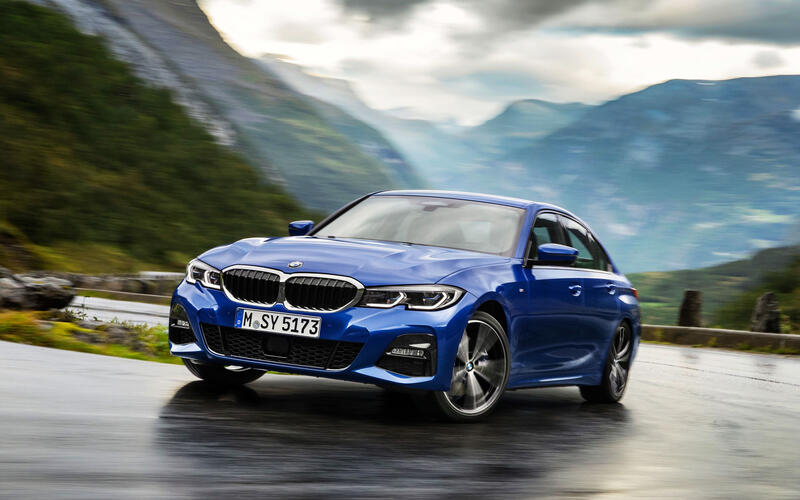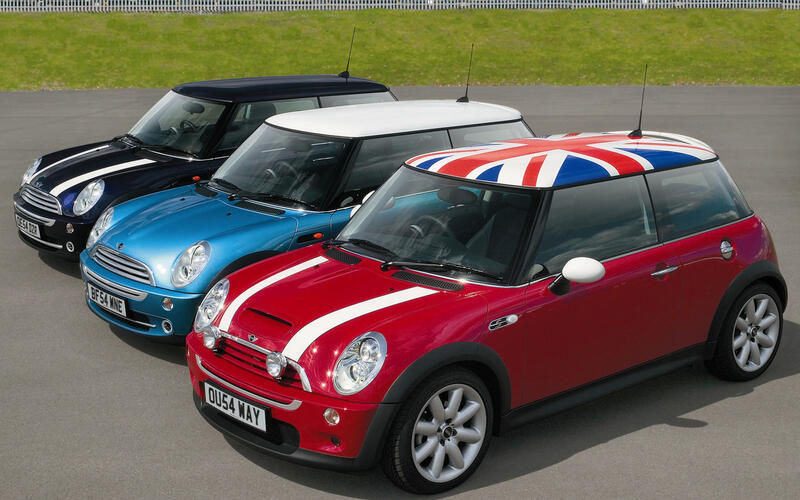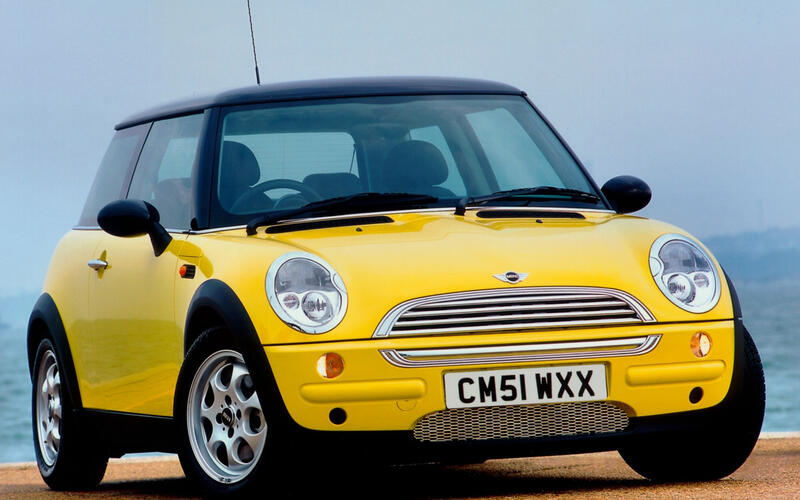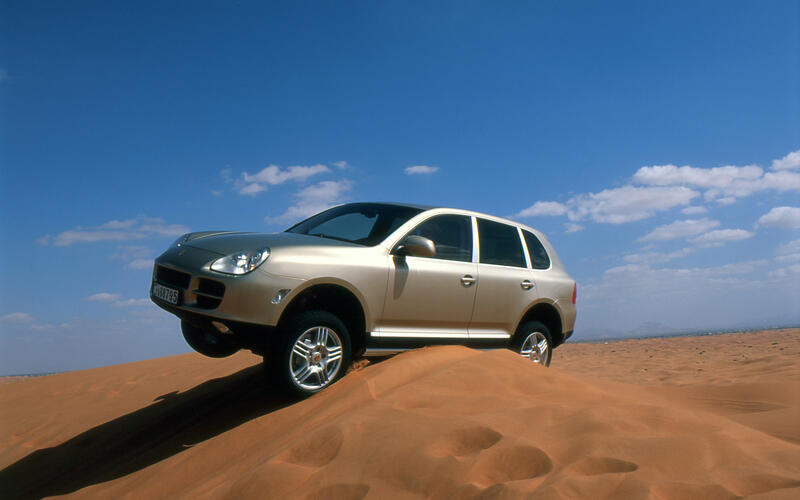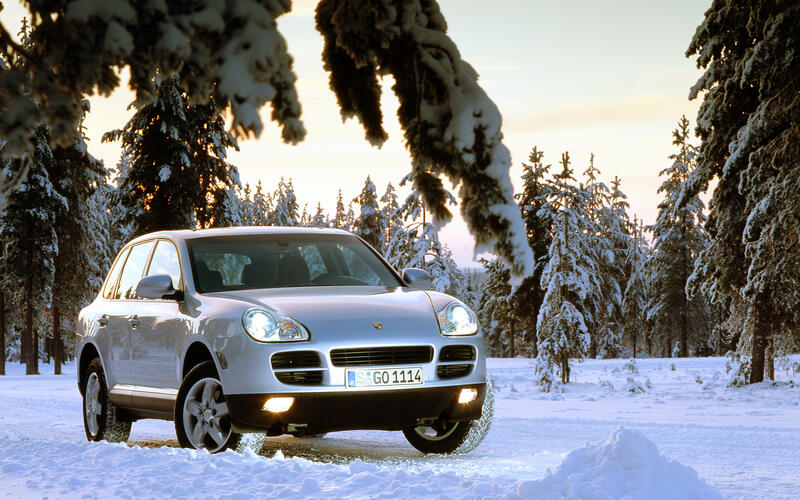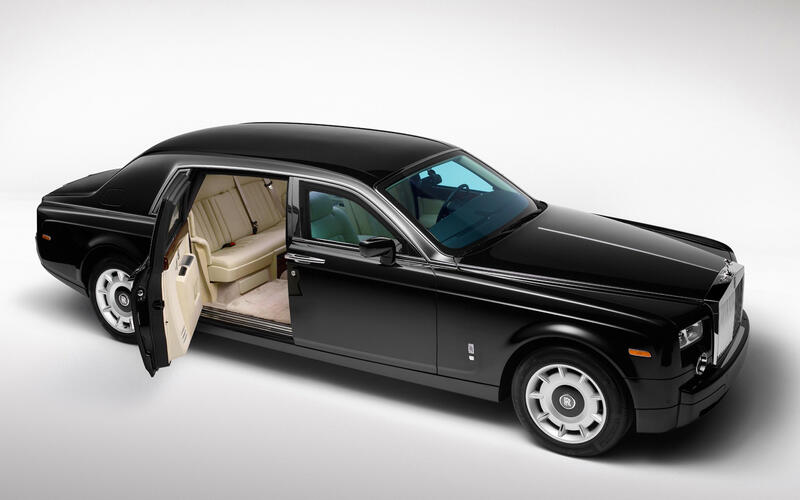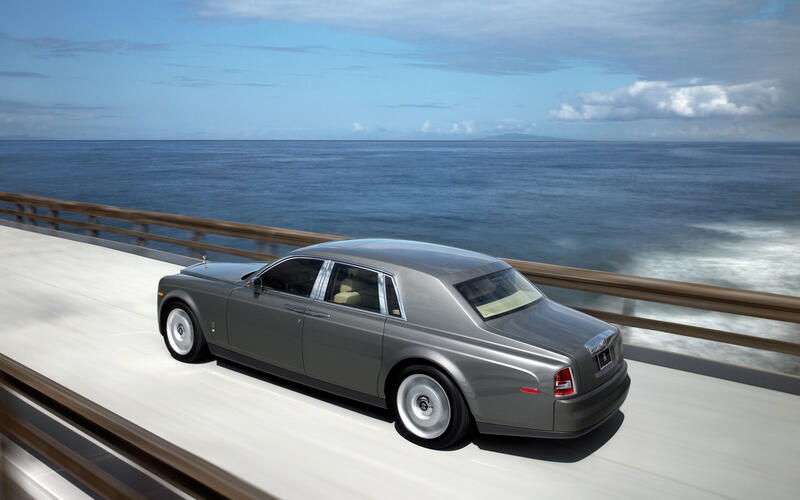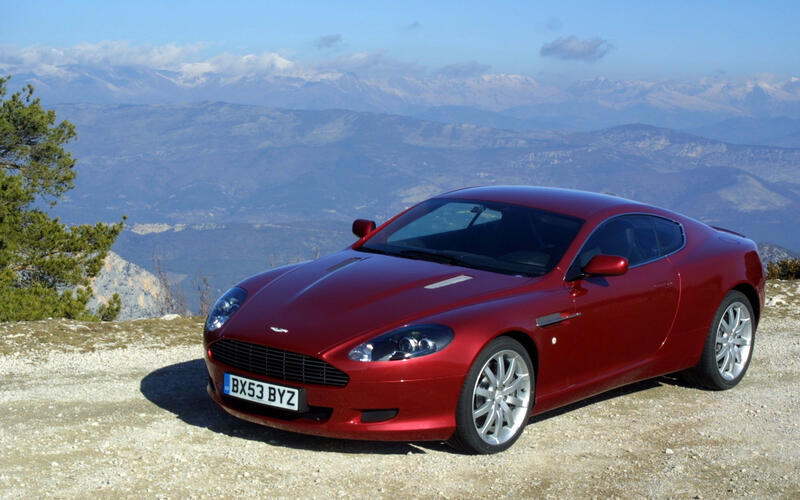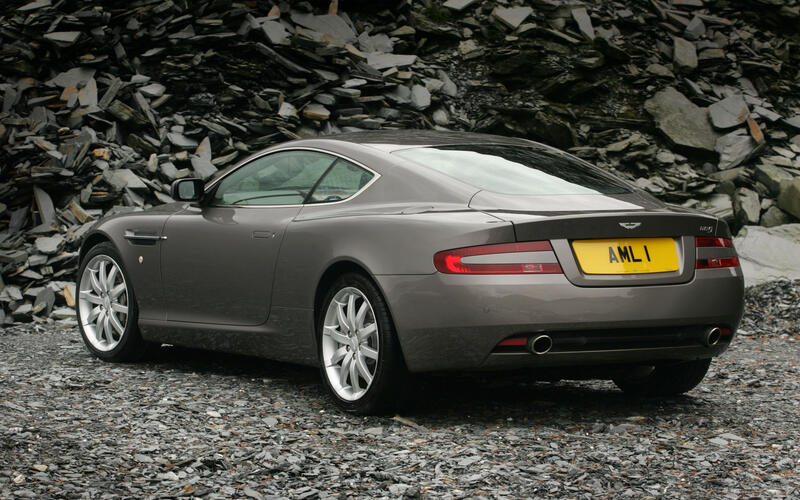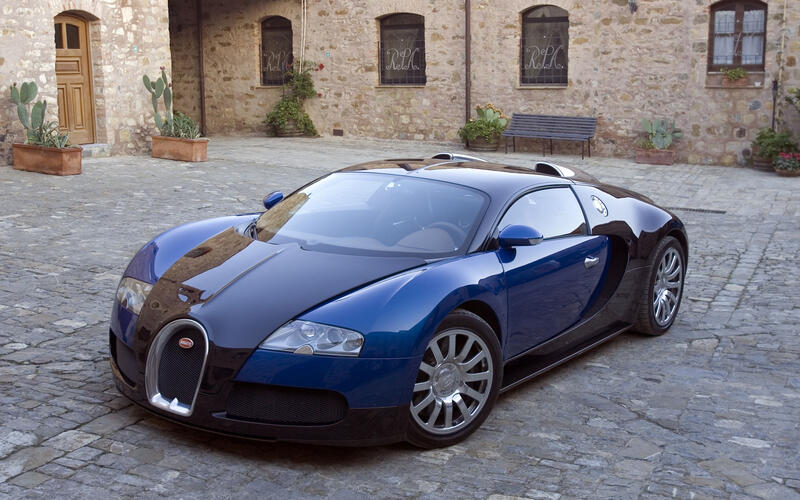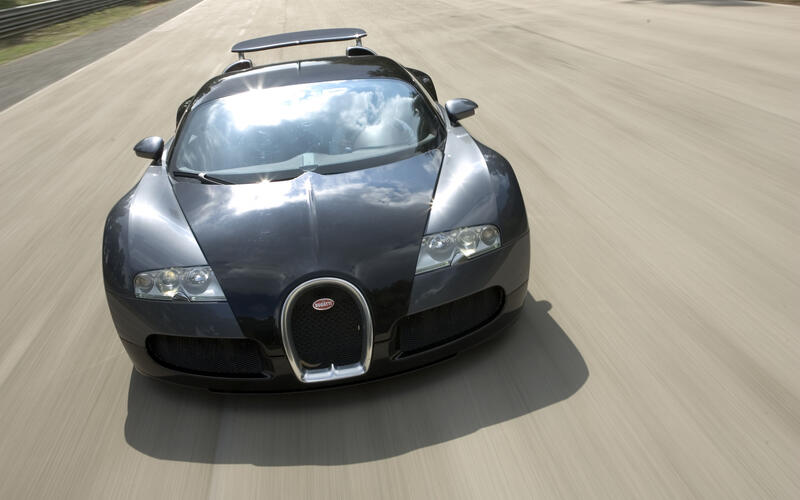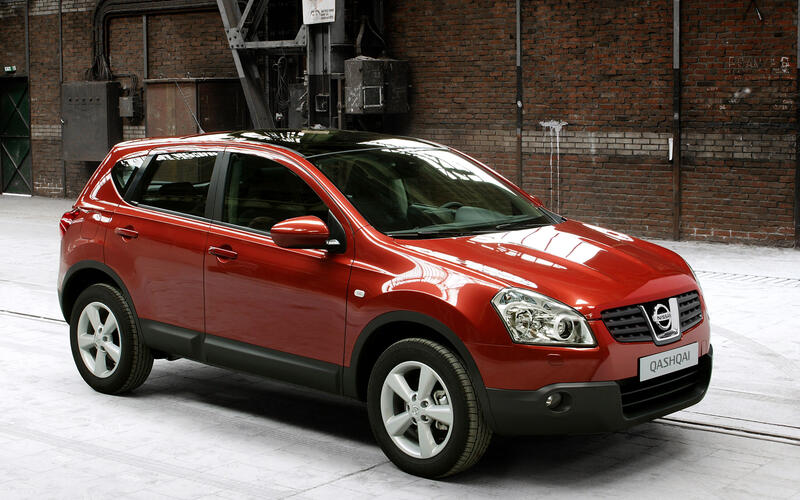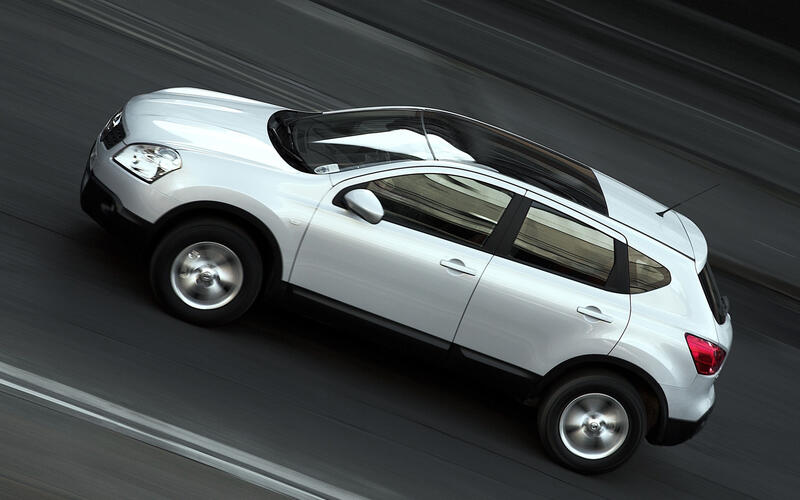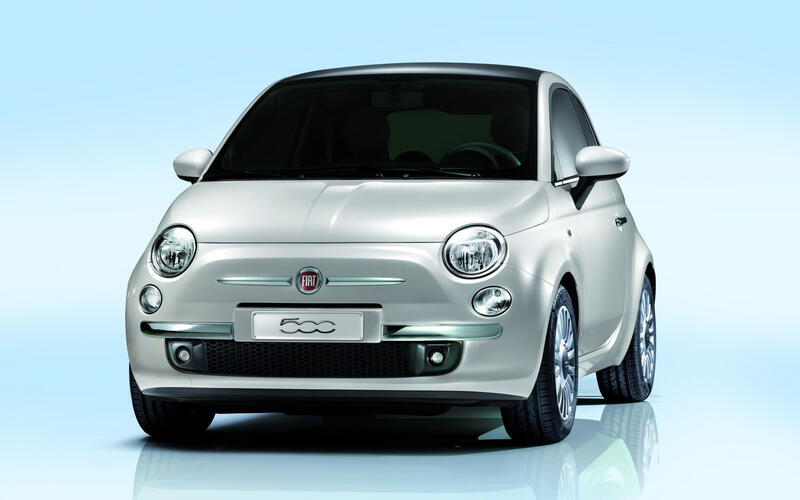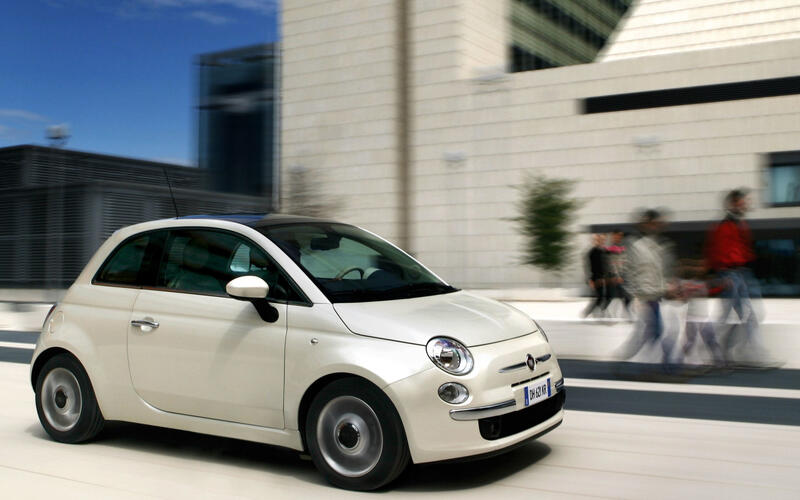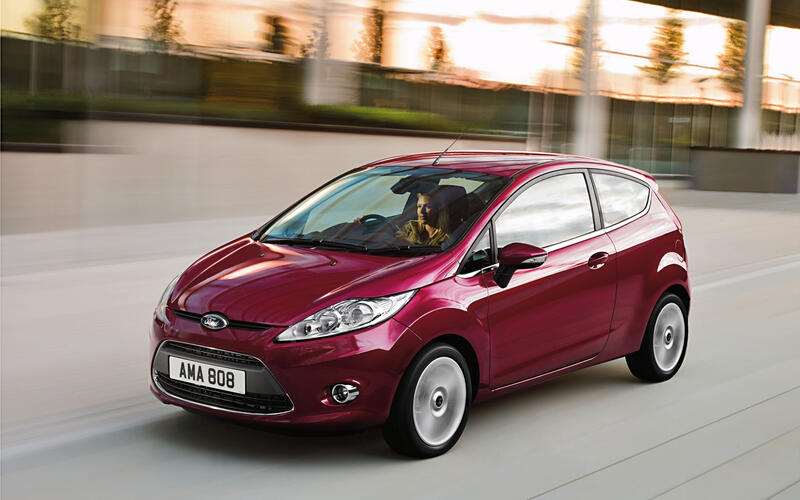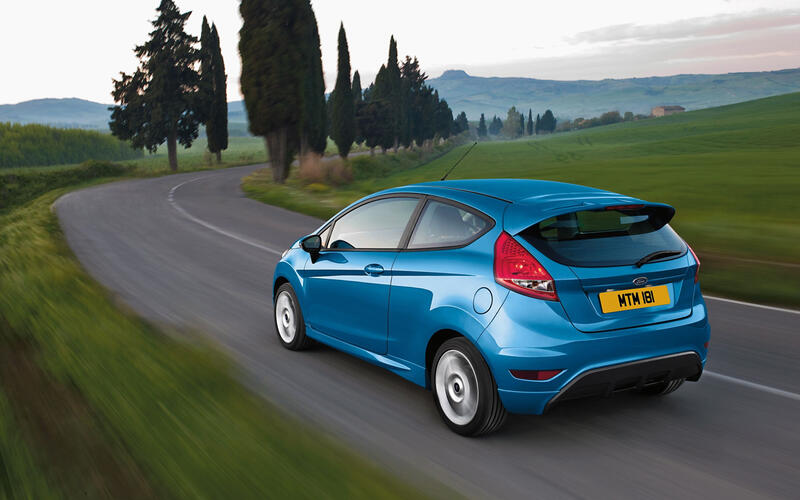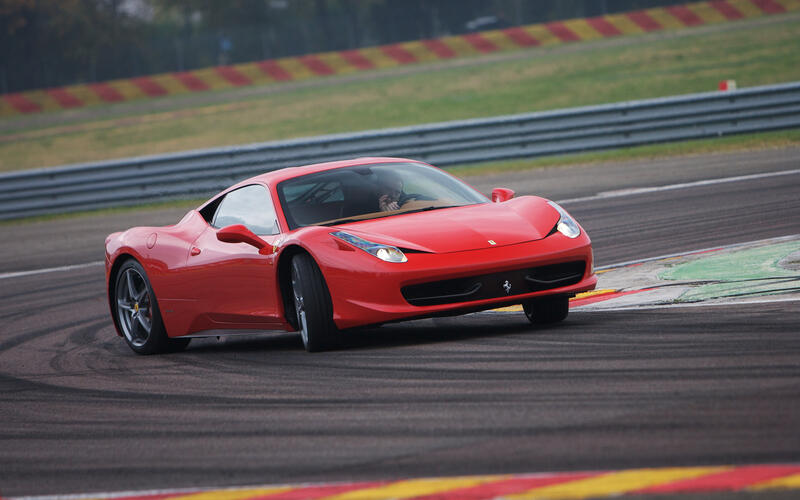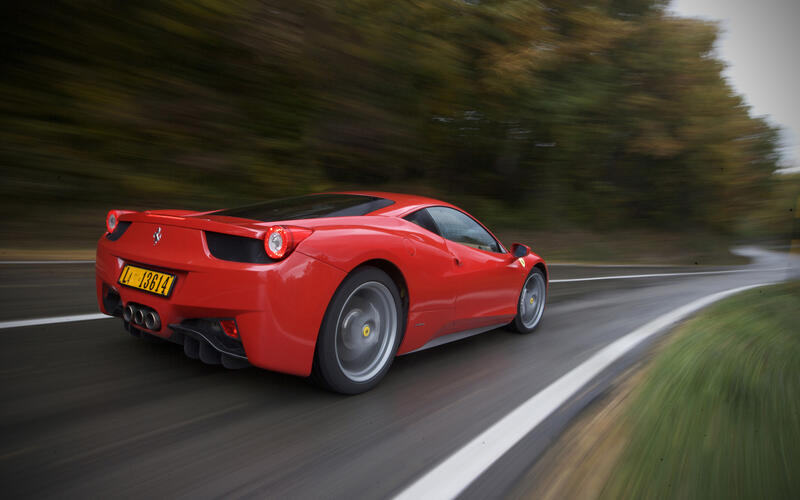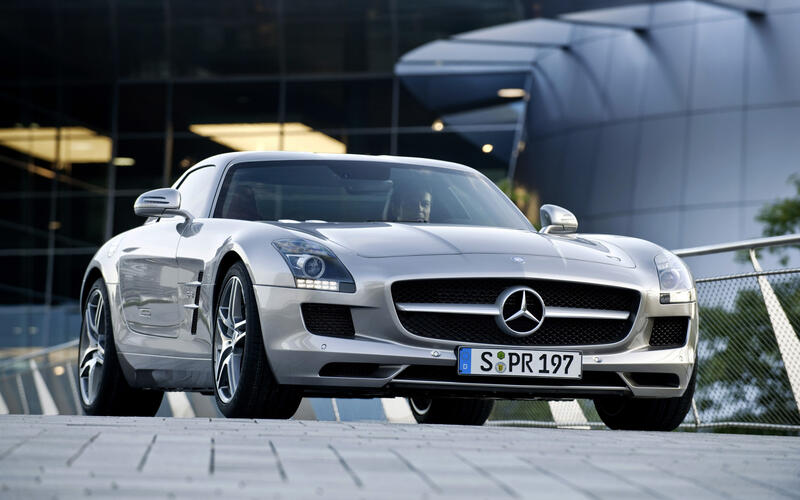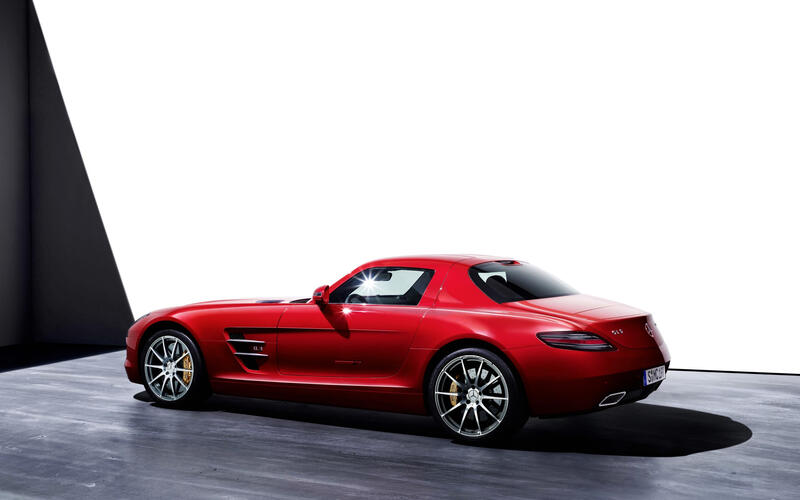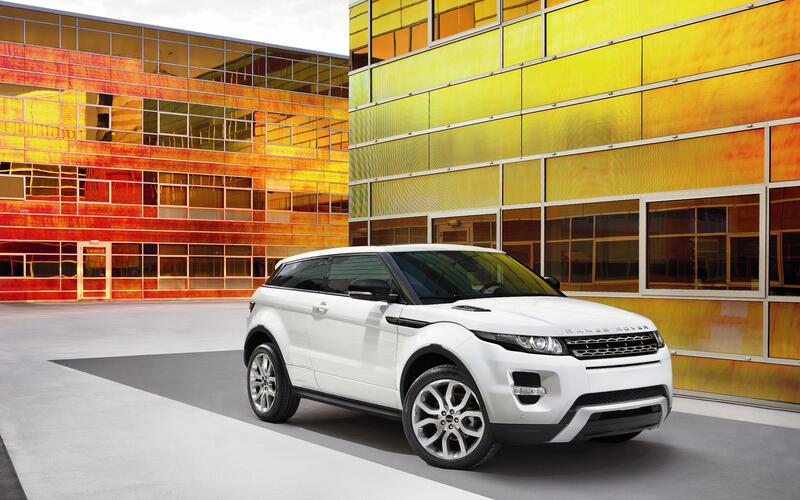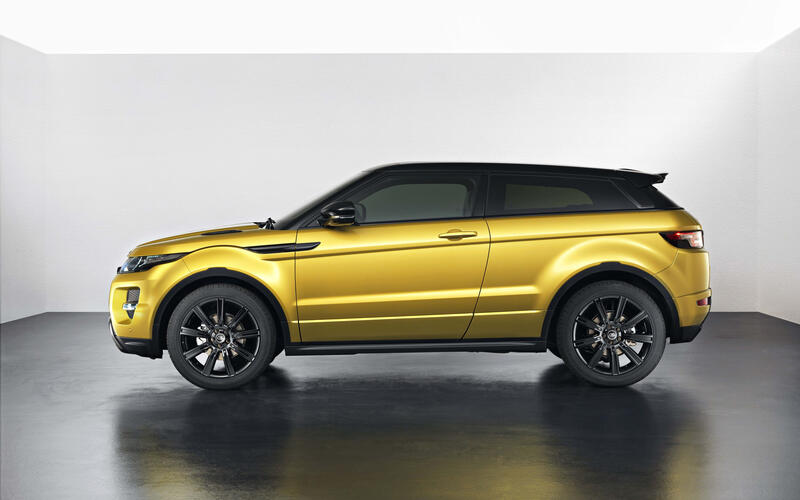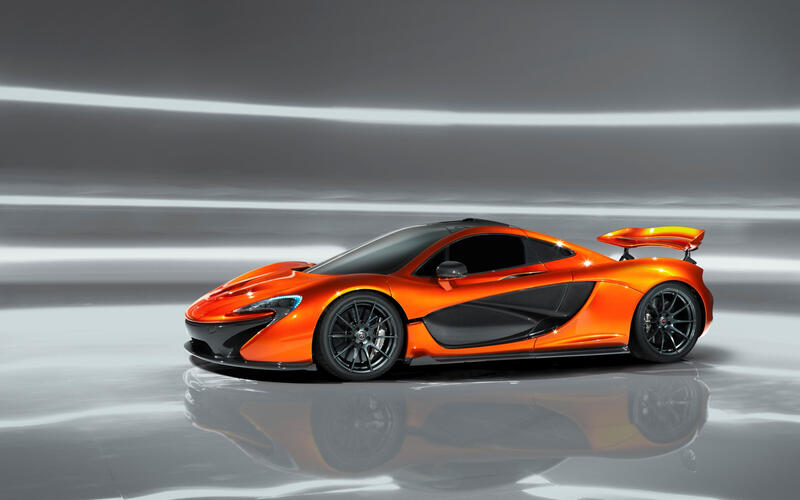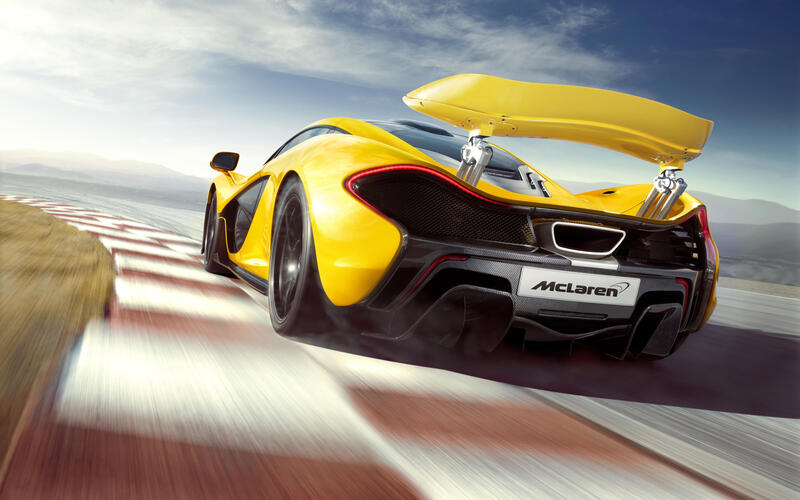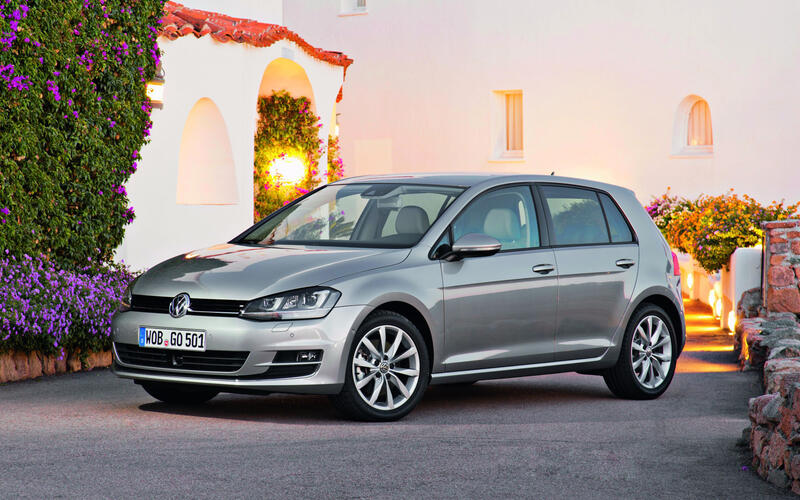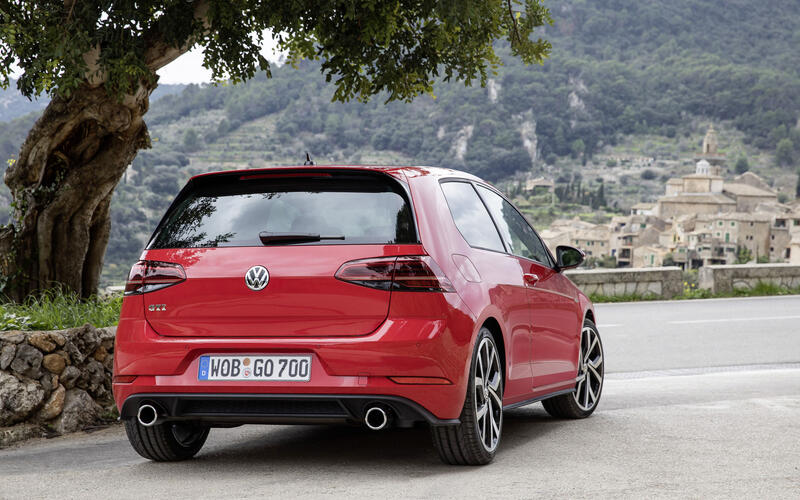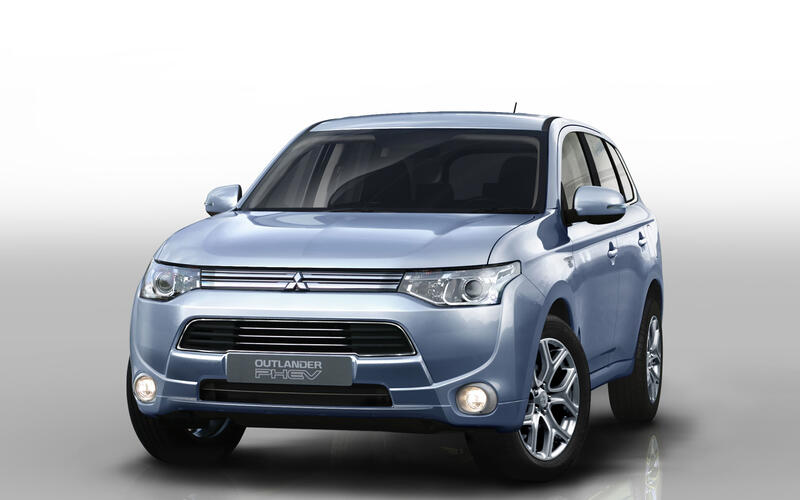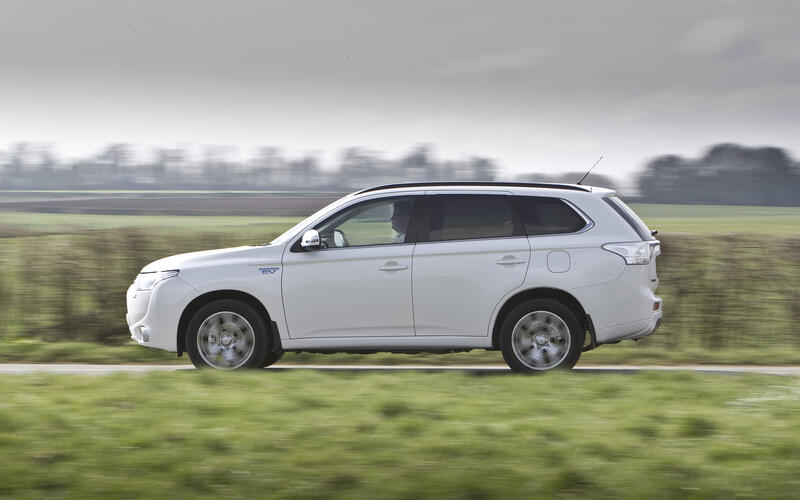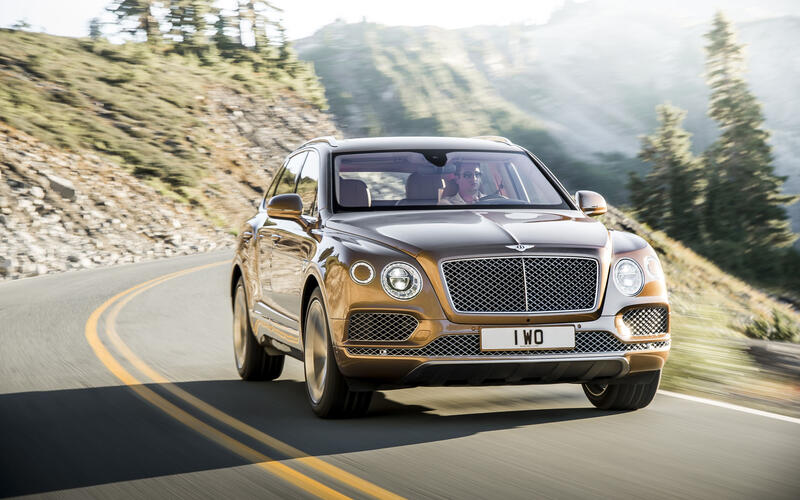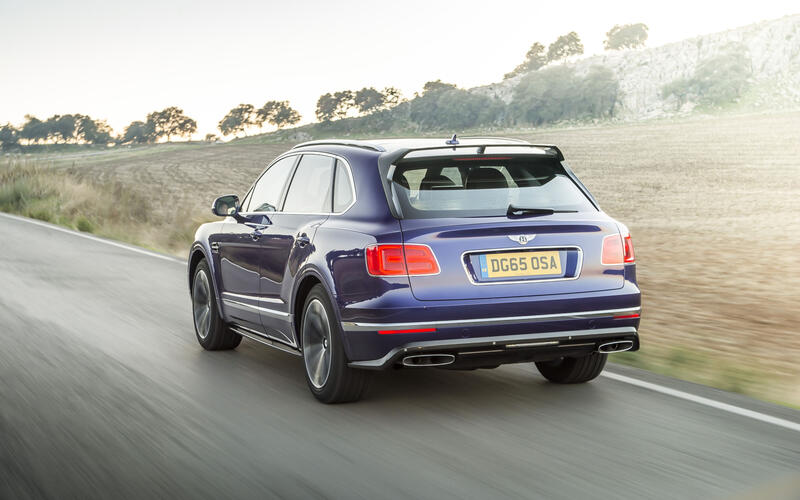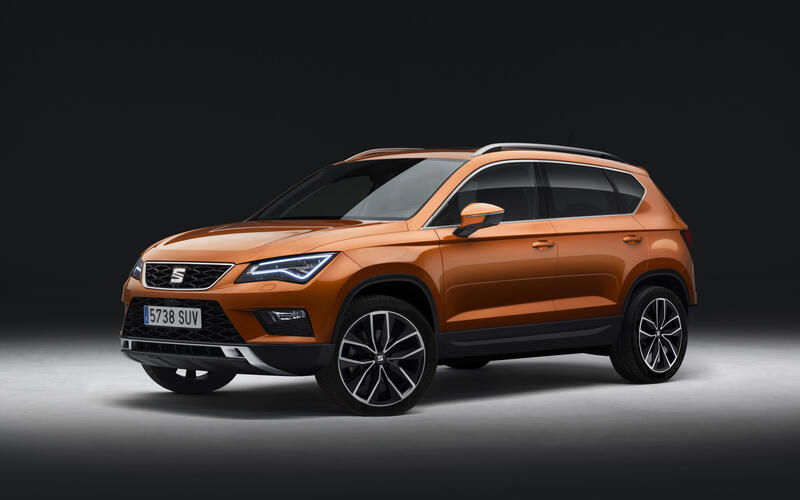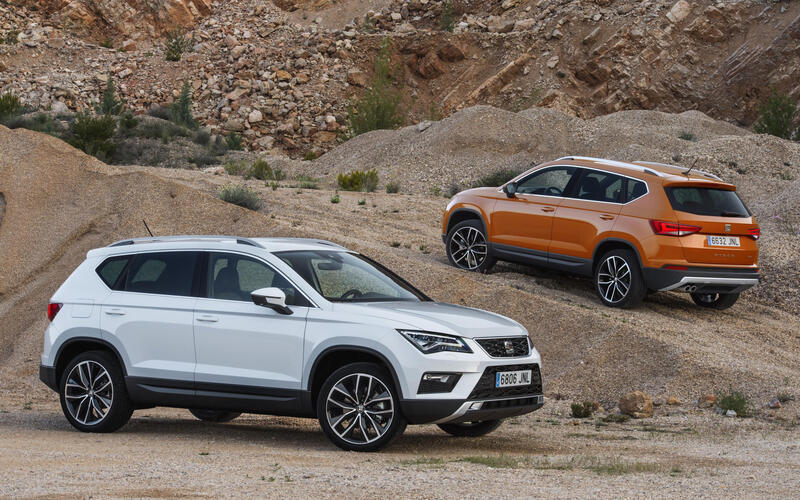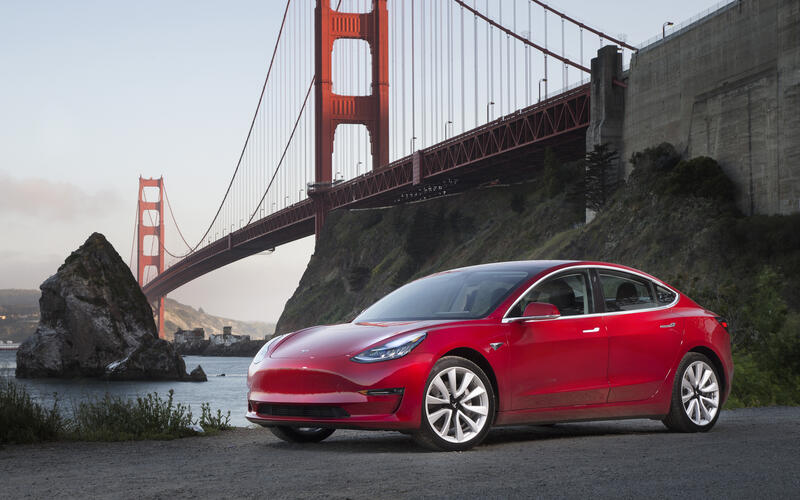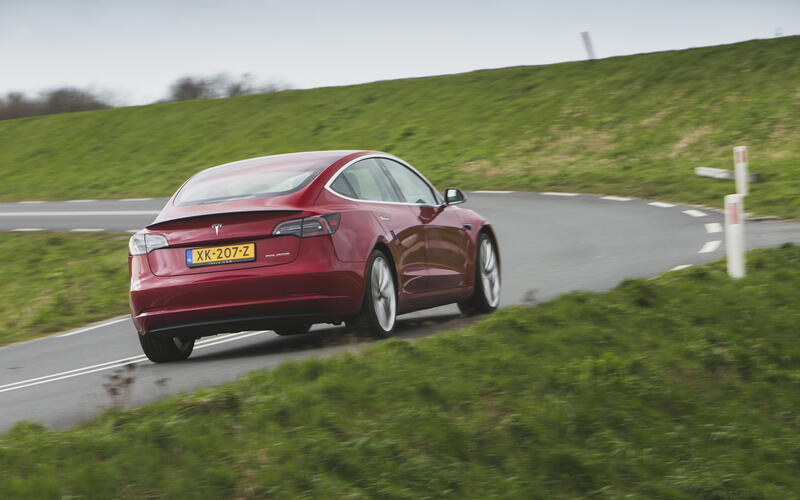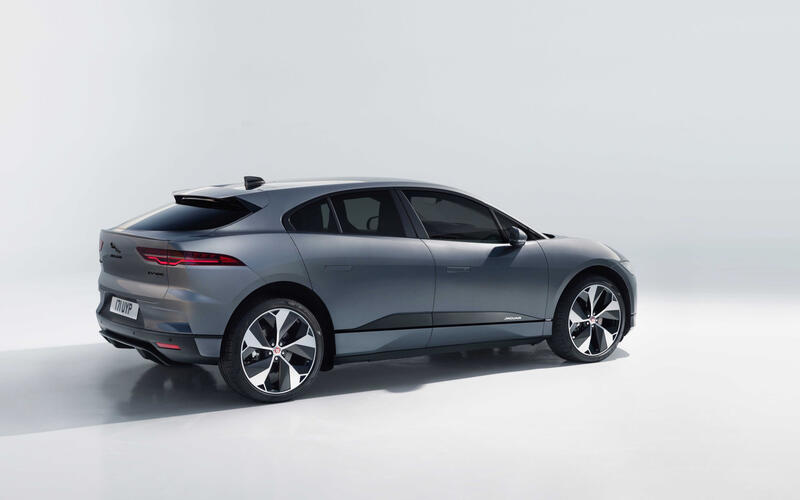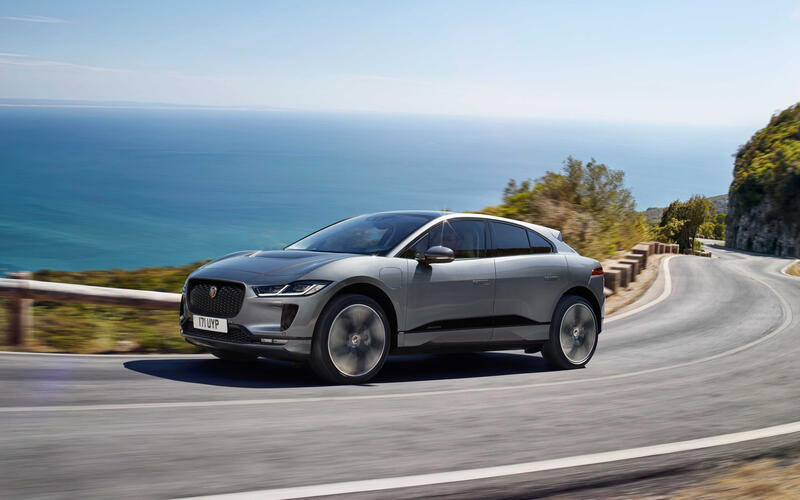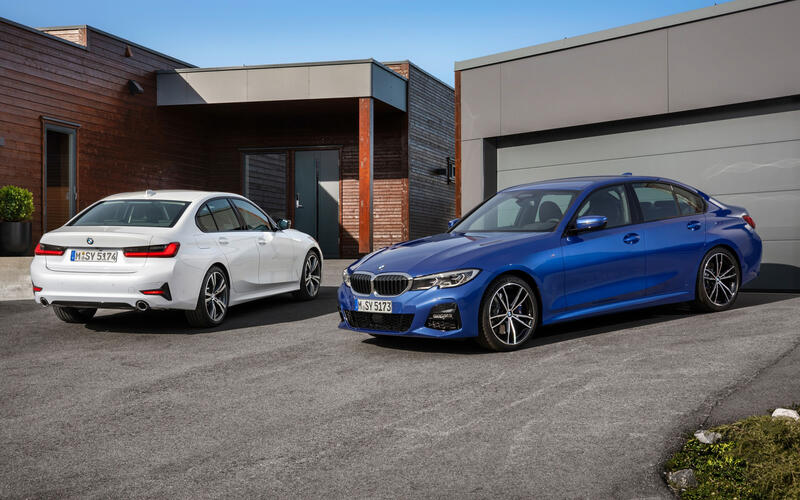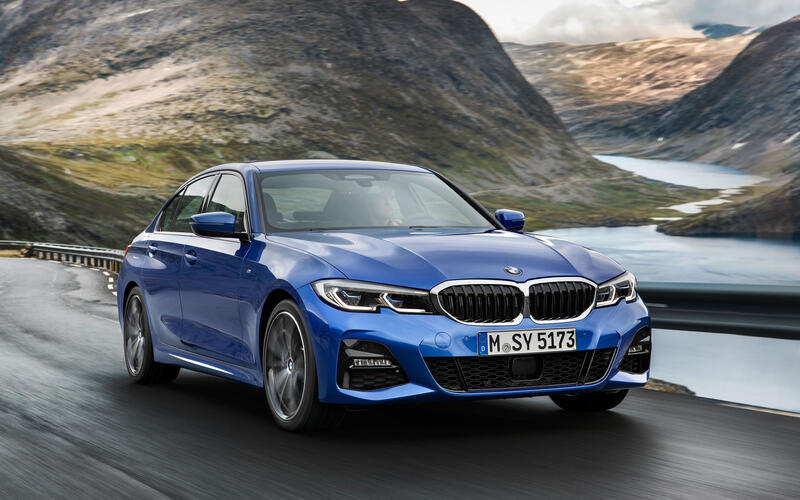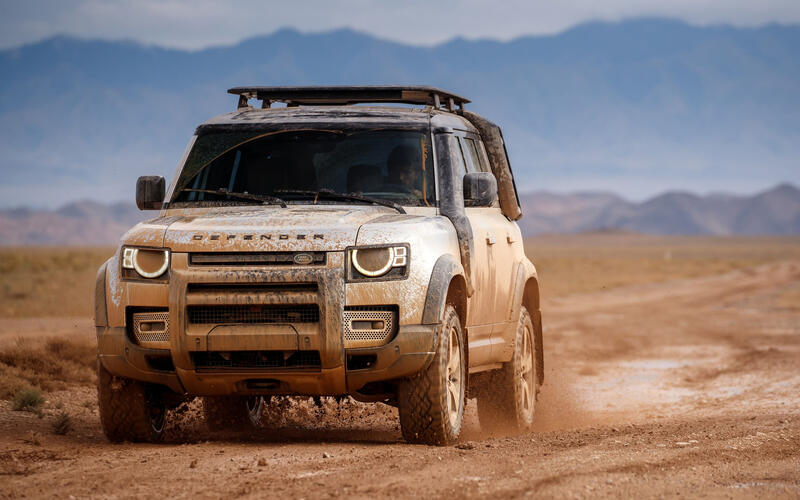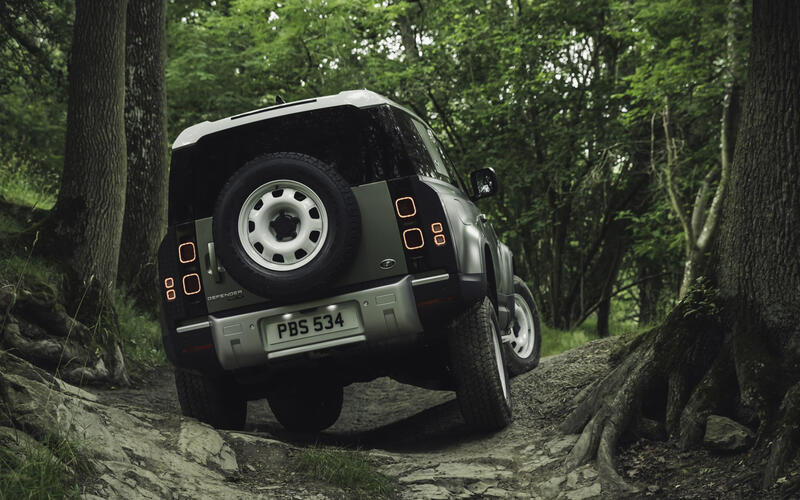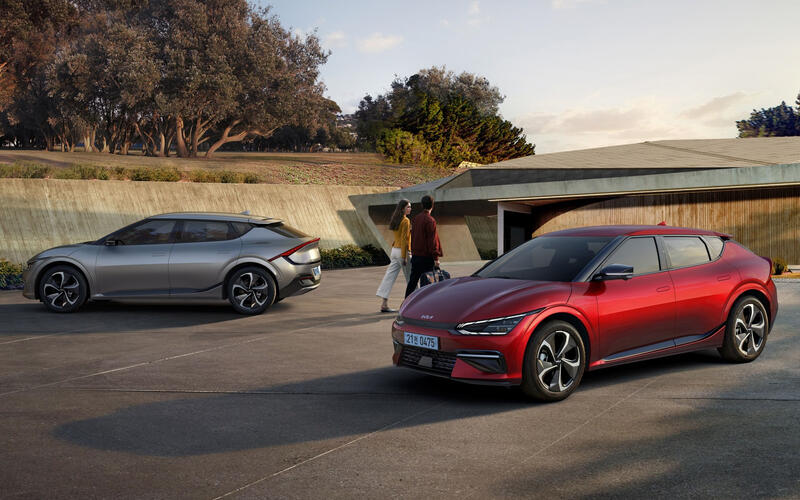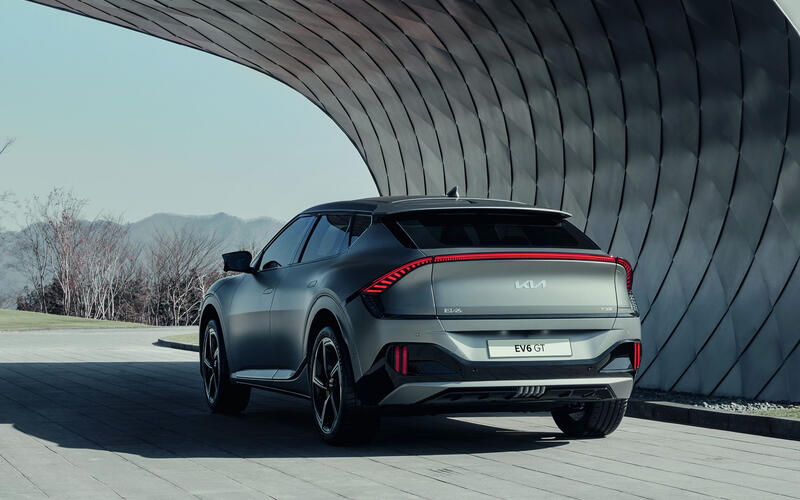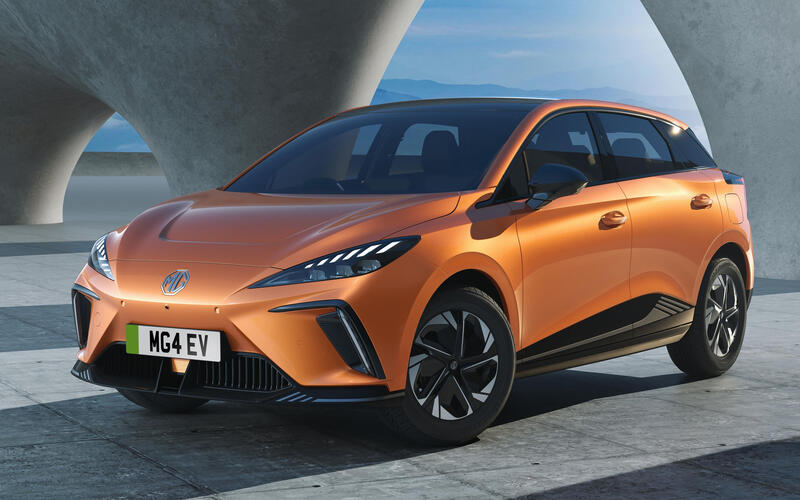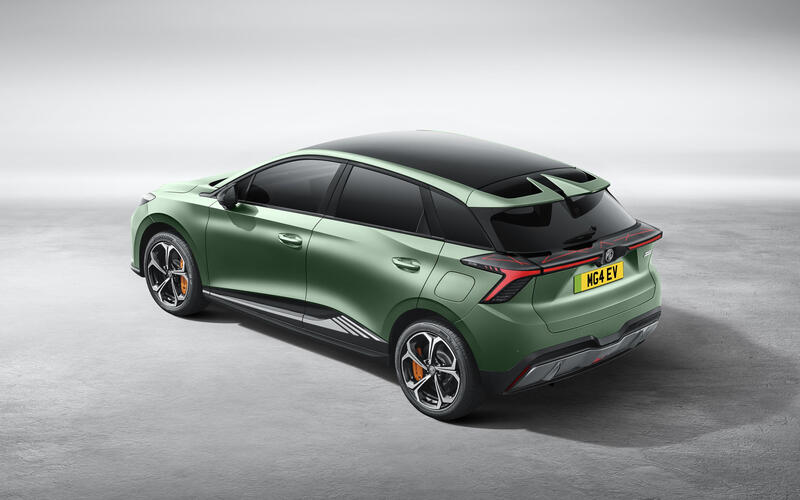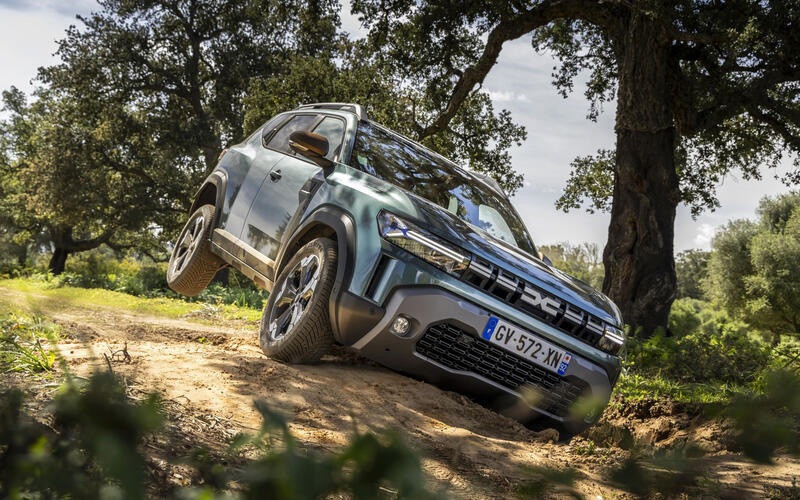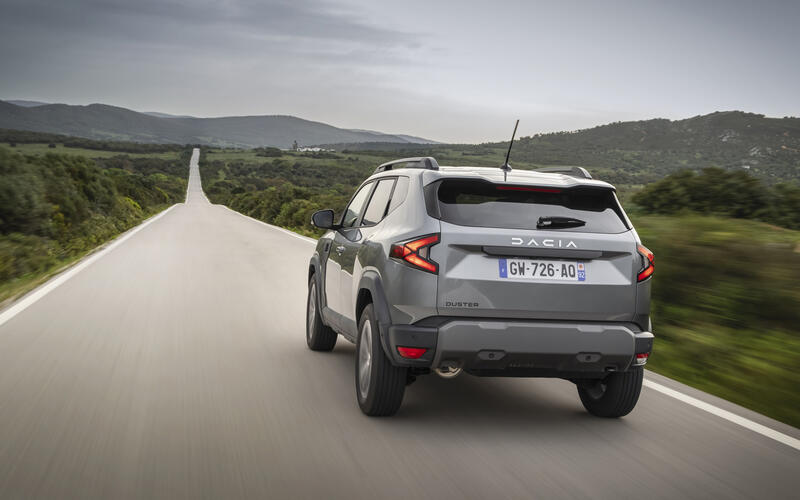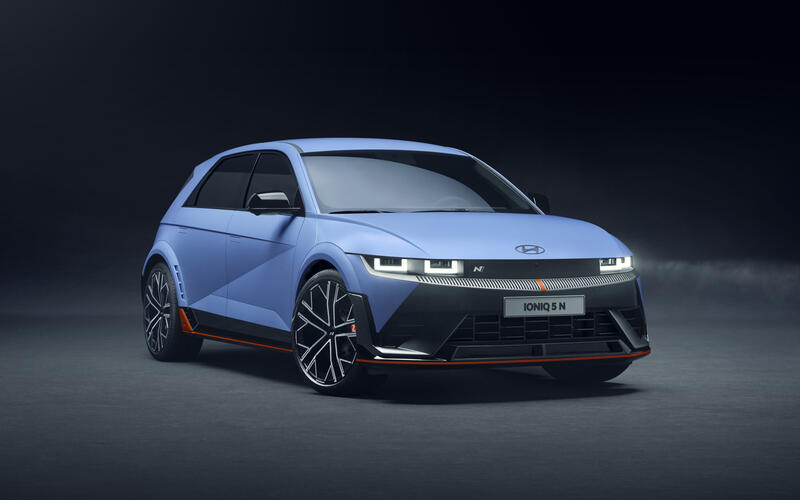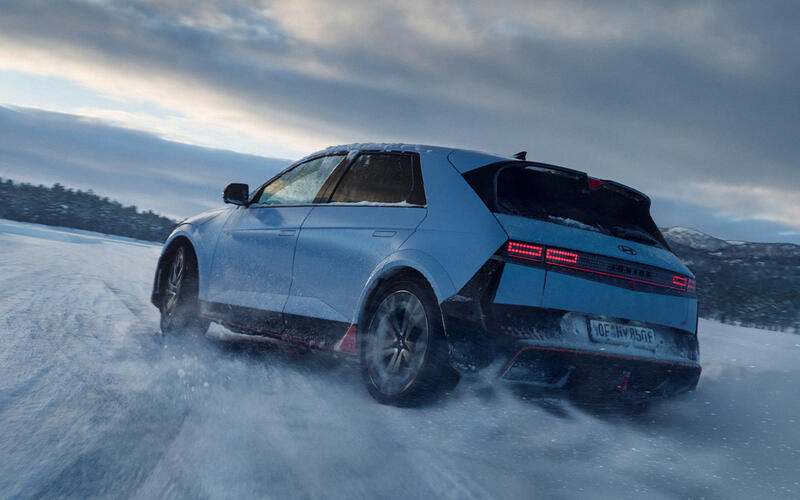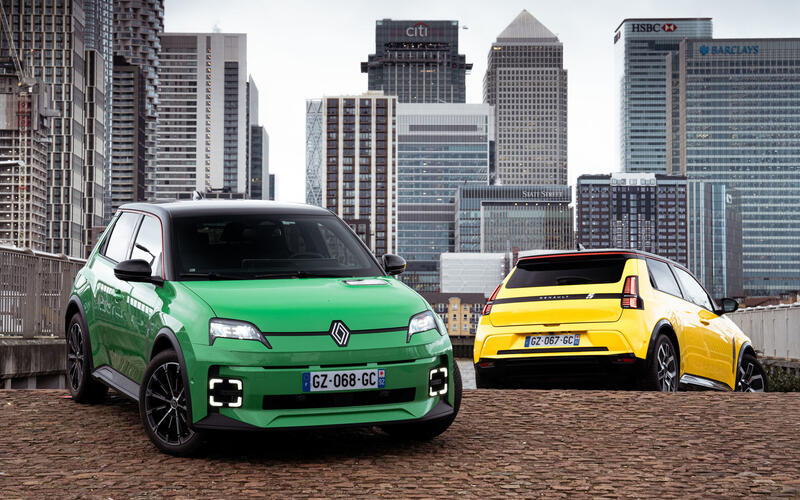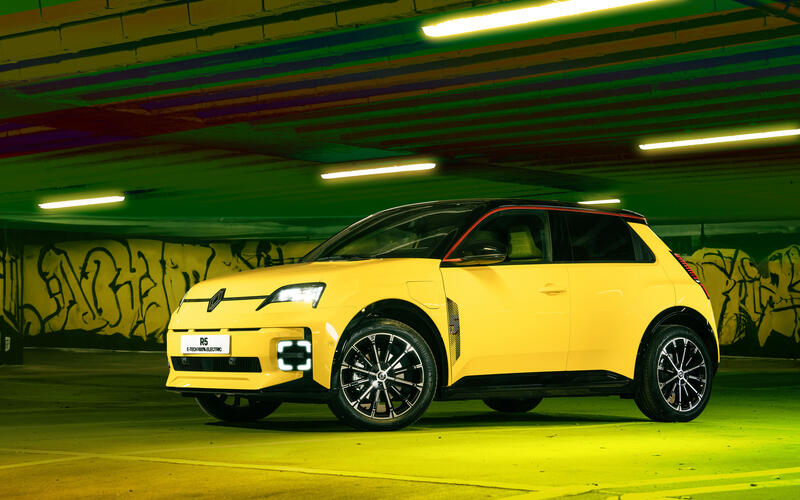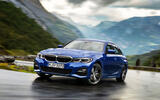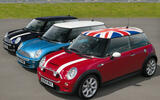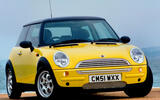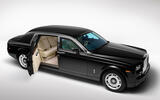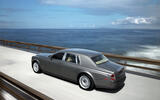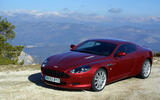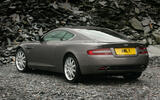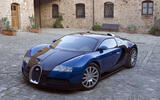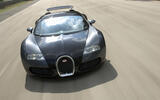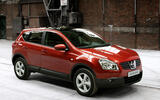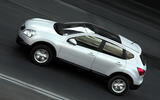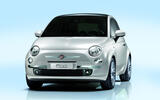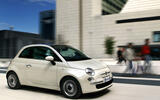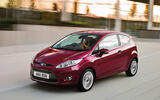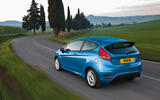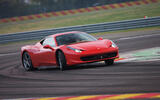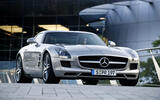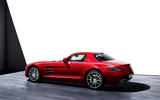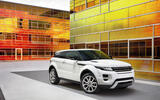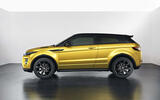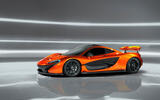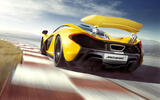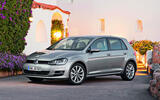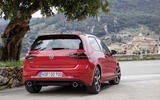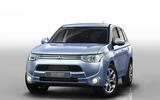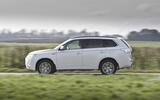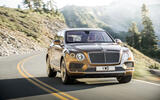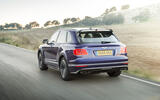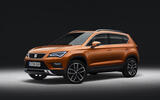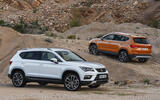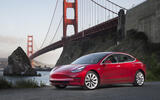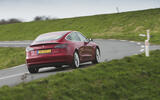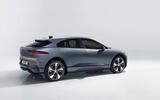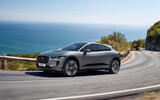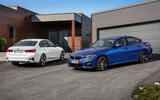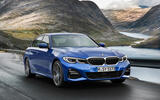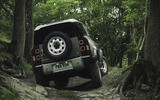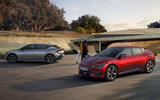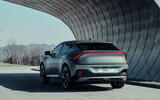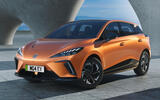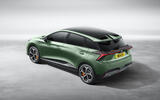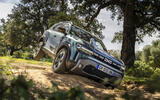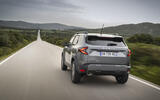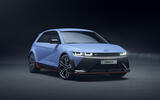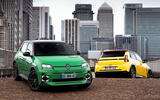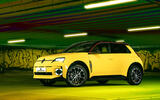 Slide of
Slide of
We're only 25 years in, yet the 21st century has already yielded a remarkable crop of game-changing new models.
The past 25 years have given us a lot to look back on. When the 21st century began, SUVs weren't a thing, Ford had just bought Land Rover and Tesla had yet to be created because the idea of driving an EV remained a distant future fantasy.
Our goal here was to pick the 25 cars that have defined the first 25 years of the 21st century. Not the best, fastest or biggest-selling - instead, these are the most significant machines. We have picked one car for each year, and we set a rule that each brand can only feature once.
Scroll through the gallery to see our choices, in chronological order:
 Slide of
Slide of
2001: Mini hatch
Reinventing an icon is difficult: there will always be those who say the new one isn't 'proper'. When the Mini was revived under BMW (but largely developed by what remained of MG Rover), some said it was too big, too expensive and not clever enough. Today, 25 years on, it's clear that the modern Mini's direction as a small, fun-to-drive, retro-styled premium car was spot on.
The concept is straightforward, but the Mini's brilliance rests on some clever engineering. VW's New Beetle was a Golf in drag; the Mini sat on its own platform, which allowed the designers and engineers to go to town on the styling and packaging and make it properly fun to drive.
 Slide of
Slide of
2001: Mini hatch
The styling gave the new Mini mass appeal, but the dynamics ensured it kept the enthusiasts on side. Wheels pushed out to the corners, a stiff structure and quick electrohydraulic steering created what our 2001 road test called "one of the best front-drive chassis we've come across".
What makes the Mini significant is that it showed how to do retro right (while many others showed how to do it wrong): with a strong product that was tailored for the 21st century. It did it so right, in fact, that it laid the foundations for what is now an entire brand.
 Slide of
Slide of
2002: Porsche Cayenne
Before the Cayenne arrived in 2002, Porsche only sold sublime, but not always profitable, sports cars. The Boxster had rescued the firm a few years prior, but in order to truly thrive, Porsche needed to diversify further.
BMW's X5 proved a 4x4 could double as an executive express; Porsche set out to prove an SUV could also be a supercar. Enter the Cayenne.
 Slide of
Slide of
2002: Porsche Cayenne
With up to 450bhp and 457lb ft from a twin turbo V8 and a 0-62mph time in the mid-fives, the Cayenne was one of the fastest five-seaters of its day. It could handle, too: trick diffs and power management electronics aided performance in corners, while the four-wheel drive system's hefty rear bias channelled the spirit of the 911.
Its ride in town was good, there were three proper seats and a big boot in the back and it could follow a Discovery down off-road tracks. It was nothing short of a revolution.
 Slide of
Slide of
2003: Rolls-Royce Phantom
Having revived one classic British brand with Mini, BMW repeated the trick a few years later at the opulent end of the car market. The subsequent incredible success of the seventh Rolls-Royce Phantom kick-started a new era for a marque whose very name is a byword for luxury.
 Slide of
Slide of
2003: Rolls-Royce Phantom
The Phantom was the product of a new firm: Rolls-Royce Motor Cars created by BMW. It used a BMW 6.5-litre V12 and other components, but sat on its own bespoke platform. Prices started from £250,000 and production ran for nearly 15 years.
Rolls-Royce has slowly added to its product line and grown, but the fabulous Phantom remains the heart of the brand.
 Slide of
Slide of
2004: Aston Martin DB9
Back in the early 2000s, it was decided that the replacement for the popular Aston Martin DB7 couldn't possibly be called the DB8, out of fear that people would mistakenly assume that a V12-engined grand tourer might be powered by nothing more than a lowly V8. Therefore, the DB9 was born.
 Slide of
Slide of
2004: Aston Martin DB9
Beneath its skin, the DB9 really was the first Aston Martin of the modern era, debuting the company's all-aluminium Vertical-Horizontal model architecture when it entered production in 2004. As such, you could say every DB, Vantage and wider Aston Martin model that followed it for more than a decade all flowed off this platform.
The DB9 represents Aston Martin in its most bold and expansive of moods, at a time when it had former Porsche executive Ulrich Bez at the helm and the financial might of Ford and the Premier Automotive Group behind it. It broadened Gaydon's horizons and showed which way the future lay.
 Slide of
Slide of
2005: Bugatti Veyron
Ferdinand Piëch's legacy looms large. The long-serving Volkswagen Group head was known for his obsession with experimentation, and it's a characteristic that resulted in the two-time Le Mans-winning Porsche 917, the ultra-slippery C3 Audi 100 and the 261mpg Volkswagen XL1.
For those creations alone we must be thankful, but of all the enigmatic Austrian's commendable feats of engineering, the Bugatti Veyron will forever be the best known and most impactful.
 Slide of
Slide of
2005: Bugatti Veyron
At launch, it was the world's fastest and most powerful production car, and only a handful of new cars in the subsequent 20 years could beat it in a game of Top Trumps. Its headline figures still sound incredible today: an 8.0-litre W16 engine, four turbos, 1479bhp and a top speed of 268mph.
Right up there with Concorde, the Flying Scotsman and the International Space Station as an era-defining feat of engineering, the Veyron will be remembered as a marvel of engineering, and a reminder that truly great things can be achieved when the company accountants are sent home early.
 Slide of
Slide of
2006: Nissan Qashqai
When Nissan began to develop a European-honed replacement for the unsuccessful Almera family hatchback, the early focus was on a compact MPV but worries over its commercial potential prompted a shift in direction.
Nissan engineers spotted the growth in popularity of larger SUVs and thought that could be applied to the C-segment, and since it was a family car, it didn't really need the off-road ability or rugged cladding of a 4x4.
 Slide of
Slide of
2006: Nissan Qashqai
Development was, for the first time for a Nissan, led by the firm's UK technical centre in Cranfield, and the result was a machine with the coveted big wheels, high ground clearance and seating position of a larger SUV, but without the go-anywhere ability that few people needed.
European production took place in Sunderland, and within a year Nissan had sold 100,000 units. Rivals took note, and now every mainstream car firm has its own compact crossover – most of which are still referred to as Qashqai rivals.
 Slide of
Slide of
2007: Fiat 500
When it finally went off sale last year, after 17 years and more than 2.5 million units sold, the reborn Fiat 500 still didn't look like an old car.
Well, it did, of course. It was meant to – that was the whole point. But the design wasn't tired or played out; the recipe still felt fresh and it still held huge commercial appeal. Nobody will look back on it more fondly than Fiat's bosses, who might have found themselves out of a job years ago were it not for the roaring success of the 500.
 Slide of
Slide of
2007: Fiat 500
Before 2007, Italy's oldest car maker was in a bad way: the company was poorly managed and its cars were plagued by design and quality issues that turned buyers away from the showroom in droves. From holding half of the Italian car market in 1990, it had dropped to a share of just a quarter by 2003.
Much was riding on the 2007 replacement for its smallest car, the Seicento. Using existing architecture in a new, tightly packaged format, the 500 was cheap to develop and cheap to build which meant it was cheap to buy. But its retro-modern looks and style-conscious trimmings meant it also had the sort of premium cachet that had hitherto been largely absent from the city car class. It also drove with a zip and verve reminiscent of its 1957 namesake. The 500 was a true people-pleasing proposition, and it remained a recommendable contender as rivals came and went.
 Slide of
Slide of
2008: Ford Fiesta
For the sixth-generation Fiesta, Ford realised that the new model needed to be tailored towards a youthful, fashion-conscious demographic. Instead of being just a well-priced and practical small car, it also needed to be a design statement.
Therefore, Ford gambled on the styling for its new supermini, resulting in an edgy, futuristic design. In short, the gamble paid off, and the sixth generation Fiesta still looks fresh today, almost two decades on.
 Slide of
Slide of
2008: Ford Fiesta
Despite this approach though, Ford didn't betray its commitment to dynamic excellence either – fun cars are for everyone, after all. The Fiesta was easily the best supermini of the time to drive, and in hotter ST form it earned a place in the pantheon of hot hatches.
The combination brought unprecedented success. The sixth Fiesta was the UK's best-selling car in every year of its life and remains a mainstay of British roads.
 Slide of
Slide of
2009: Ferrari 458 Italia
We had all experienced and enjoyed a good decade and a half of mid-engined Ferrari before the arrival of the 458. The F355 was loved, the 360 Modena was also good and the F430 had been terrific.
But when it came to replacing the last of those three, Ferrari already knew that a new McLaren would also be coming with a mid-mounted V8 engined and a carbonfibre tub, called the MP4-12C.
 Slide of
Slide of
2009: Ferrari 458 Italia
Ferrari knew, in short, that the 458 Italia would have to be something special. It was exactly that. When it arrived, the 458 felt like it moved the game on by a generation and a half.
At the time, we described it as " a truly exceptional achievement". The 458 was a car that the MP4-12C couldn't live with, and it set a tone that competitors have been playing catch-up with ever since.
 Slide of
Slide of
2010: Mercedes-Benz SLS AMG
The Mercedes-Benz SLR McLaren was an unusual beast that blended the supercar, hypercar and grand touring genres in a large – and very expensive – technological showcase. But Mercedes could only sell two-thirds of the planned production, and so its successor was designed to be a very different car.
Instead of straddling sectors and being complicated by involvement from McLaren and Gordon Murray, the SLS was conceived as a purer sort of supercar. It was half the price of the SLR and, most significantly, was the first model developed from the ground up by AMG.
 Slide of
Slide of
2010: Mercedes-Benz SLS AMG
The SLS ushered in a new era of Mercedes design language, featured the world's most powerful naturally aspirated production engine in the form of the 563bhp 6.2-litre 'M159' V8, and had stunning gullwing doors.
The SLR had, to a degree, lacked identity, but there was nothing uncertain about the SLS: it was a supercar through and through. We said it felt like "a hot rod polished to the nth degree", which is exactly what an AMG should feel like.
 Slide of
Slide of
2011: Range Rover Evoque
The Range Rover Evoque's arrival marked a significant shift for Jaguar Land Rover. As one of the early premium compact SUVs, it was stratospherically successful for the company, catapulting it into an entirely new buyer base.
It soon accounted for one-third of Land Rover's sales, and while it remains a premium product, the sight of so many of them on the roads shows the Evoque has also entered the mainstream.
 Slide of
Slide of
2011: Range Rover Evoque
The flagship Range Rover may be far more profitable in terms of price per unit, but the Evoque elevated Jaguar Land Rover in a way none of its models managed to do afterwards until the new Land Rover Defender came along.
For further evidence of the impact the Evoque had, think back to when Land Rover added a convertible to the line-up. It was short-lived, but the fact that a cabrio was even deemed worthy of production reveals the significance of the Evoque at the time.
 Slide of
Slide of
2012: McLaren P1
When Ron Dennis revealed the P1 at the 2012 Paris motor show, we knew we were looking at a piece of the future. What we didn't realise was just how much this flagship supercar – McLaren’s first since the F1 – was rewriting the playbook for future supercars.
Turbocharging, a carbonfibre monocoque, hybridisation and active aerodynamics: the P1 had it all, wrapped in 'biomimicry' bodywork whose lines took inspiration from sharks and manta rays. It was a visionary product that still feels contemporary today.
 Slide of
Slide of
2012: McLaren P1
Another facet of the P1's genius is more subjective than any of the extraordinary hardware or breathtaking speed. McLaren had thrown the kitchen sink at this supercar in terms of engineering complexity, and yet it remains joyful to drive. It had verve and mischief and exploded the myth that McLarens were effective but dull.
The big picture, of course, is that the P1 signalled the true arrival of fresh-faced McLaren Automotive as a force. Ferrari had the LaFerrari, Porsche had the 918 Spyder and the guys from Woking had an answer to both of those cars. The P1 was the moment McLaren became a player.
 Slide of
Slide of
2013: Volkswagen Golf
Cracking the difficult second album is one thing, but nailing the third is harder still. And then there's the fourth and fifth to worry about. But a seventh? How could that possibly be as groundbreaking or as genre-shaping as the smash-hit original?
Therefore, it's frankly extraordinary that the seventh-generation Volkswagen Golf stands proud as the high point of a legendary lineage that stretches back for more than half a century.
 Slide of
Slide of
2013: Volkswagen Golf
Making huge strides over its predecessor in terms of material quality, refinement, athleticism and efficiency, the Mk7 Golf was an expensive-feeling and massively versatile rebuttal to the notion that affordable family cars couldn't be desirable.
And this era of GTI – particularly the facelifted Mk7.5 version – is perhaps the absolute zenith of sporting VWs. Expertly achieving the near-impossible balance of value, accessible driver reward, raw desirability and everyday utility, it is the closest any car has come in recent years to perfecting the hot hatch formula and remains a benchmark for the segment even now.
 Slide of
Slide of
2014: Mitsubishi Outlander PHEV
Drive a modern hybrid or electric vehicle and there are a great many things you will take for granted – and the Outlander PHEV played a significant role in popularising many of them.
Paddles to adjust the brake regeneration; a smartphone app with nifty features such as turning on the headlights from afar; the ability to run as a range-extender: all were seen on this early plug-in hybrid SUV.
 Slide of
Slide of
2014: Mitsubishi Outlander PHEV
It may not have been the most scintillating thing to drive, but as a technological showcase and a more palatable route into electrification for the masses, when the Nissan Leaf had a range of less than 100 miles, it deserves a place among the most influential cars of the 2010s.
 Slide of
Slide of
2015: Bentley Bentayga
Porsche pioneered the luxury SUV long before most of its competitors, back in 2002. But when Bentley's equivalent arrived 13 years later, as SUV popularity had definitively taken hold, we observed: "Bentley has established a reputation as a maker of sporting cars that must also be luxurious.
"It's hard enough to make a luxury saloon that can do the thick end of 200mph in safety and security, while retaining the 'luxury' part of the tag. Now throw on top of those demands the additional need for this vehicle to travel into sand dunes or to tow several tonnes of horse and trailer, and you start to appreciate the task Bentley has set itself."
 Slide of
Slide of
2015: Bentley Bentayga
Happily, we concluded: "The Bentayga fulfils with ease one of the widest remits ever given to a car. Terrific performance and refinement." Ten years on from its arrival, the Bentayga has benefited from a significant update and accounts for an unsurprising and significant 40% of overall Bentley sales.
 Slide of
Slide of
2016: Seat Ateca
The Ateca somehow managed to reinvigorate Seat while sparking its decline. Before the Ateca, the Spanish company ticked along as the Volkswagen Group's vaguely sporty brand, selling plenty of Ibizas and Leons.
But its first SUV was a game-changer, attracting new, mainstream buyers to the brand. For a while, the Ateca was the family SUV to have.
 Slide of
Slide of
2016: Seat Ateca
But boss Luca de Meo was frustrated there was a limit on how much buyers were prepared to spend on a Seat, and that hampered the Ateca's profit potential. So he expanded the Cupra performance line into a full-on brand, starting with a souped-up, rebadged Ateca. It worked, and while Seat still ticks along, the focus is now on Cupra.
 Slide of
Slide of
2017: Tesla Model 3
Tesla's story began sedately. We used to see Roadster prototypes whizzing around the test tracks we use, and we saw them as something of curiosity. It was followed by the quite credible Model S and, later, the gullwing-doored Model X. But Tesla was still on the edge of the mainstream industry.
The Model 3 changed all of that. It was a Tesla for the mainstream once they had worked out how to build them in larger numbers.
 Slide of
Slide of
2017: Tesla Model 3
Some traditional industry players were having a naff time after their diesel cheat devices had been discovered. So with Tesla's reputation as a squeaky-clean Silicon Valley disruptor, with a charismatic leader who wasn't (then) perceived as a liability, and having made an investment in the Supercharger fast-charging network that even today just about gives the brand competitive appeal, the Model 3's success was set.
It was the world's top-selling EV between 2018 and 2020, before that place was taken by the Model Y. Things have been interesting since, but the Model 3's role in driving widespread EV acceptance secures its position as one of the most significant cars of this century.
 Slide of
Slide of
2018: Jaguar I-Pace
It's hard to believe that Jaguar is already edging towards the start line of one of its semi-regular 'bold new eras', given that the launch of the I-Pace – its most outlandish and transformative new car in decades – still feels so recent.
Even eight years after it was revealed, the I-Pace doesn't feel particularly outdated on paper: with an official range of nearly 300 miles, a fast charging speed of 100kW, 394bhp and a sub-5.0sec 0-62mph time, it's still just about competitive with today's more mainstream crop of electric cars.
 Slide of
Slide of
2018: Jaguar I-Pace
It was pivotal in proving that electric cars could be truly desirable and capable, rather than dreary and compromised. And, unlike its American contemporary of the time, it didn't need party tricks such as gullwing doors and a 'Fart mode' to persuade early adopters.
Instead, the I-Pace was simply a convincingly classy premium SUV that happened to be electric: it was airy and luxuriously appointed inside; its striking, cab-forward silhouette looked the business; and it far outpaced anything else without an engine for dynamic appeal. Jaguar beat its rivals to the punch with the I-Pace; had it followed up that success sooner, it might not have needed its impending bold new era.
 Slide of
Slide of
2019: BMW 3 Series
As Golf is to hatchback and Defender is to SUV, BMW’s 3 Series is the definitive executive saloon. Now well into its 50th year on sale and approaching an eighth generation of reinvigoration, this BMW remains an embodiment of everything Munich does properly.
In so doing, it is perhaps one of the best-rounded and most versatile cars on sale anywhere in the world today.
 Slide of
Slide of
2019: BMW 3 Series
Today's G20-generation 3 Series is already seven years old, but is still so dynamically rewarding, thoughtfully packaged, well-built and practical that there is really no reason to stop hailing it in its various forms as the ultimate premium mile-muncher.
An electric powertrain, a new platform and a totally new look beckon next year, and while the next iteration will move the game on yet again, we will no doubt always look back on the current car as a 3 Series high point with timeless appeal.
 Slide of
Slide of
2020: Land Rover Defender
The ‘new’ Defender has integrity and authenticity as a product because it's brilliantly versatile and capable; it also has a bit of the retro-cool positioning that has so often helped to sell cars in big numbers since the turn of the century.
However, it also manages to be studiously modern; it's comfortable, safe, refined and fully featured, with just a hint of luxury, a wide choice of powertrains and every digital convenience you could want.
 Slide of
Slide of
2020: Land Rover Defender
Much agonising and teeth-gnashing went on during the conception of this car, because Land Rover knew it was remodelling its own crown jewels. But the remarkable commercial success of the design that JLR chose is all the justification needed to show that it was the right car. In 2024, when the Defender had nine in-house JLR model rivals with which to compete, it accounted for more than one-quarter of all JLR sales.
Above all else, the new Defender has proven that, even where JLR's most unique and purposeful cars are concerned, bold and outstanding design really does the business for Gaydon. And given what's going on with the Jaguar brand at the moment, that's a message that could hardly be better timed.
 Slide of
Slide of
2021: Kia EV6
It has become almost a cliché to compare fawningly the Kia of today with the unknown brand that pitched up on our shores in 1991 with a rebadged Mazda 121 and a focus on affordability above all else.
This is a company that now commands a huge 4% share of the European market, and no car has embodied that meteoric rise quite as well as the EV6. Kia's first bespoke EV didn't just prove itself worthy of consideration for electric SUV buyers; it all but redefined the segment standards for style, athleticism and efficiency, not to mention range and charging speed.
 Slide of
Slide of
2021: Kia EV6
With a chassis that struck a balance between poise and refinement, a tech-heavy cabin that had more than a whiff of spaceship about it, and a spread of powertrains that catered to mile-munchers and speed demons alike (the range-topping GT has more power than the Porsche 911 Turbo), the EV6 set new standards for its maker and raised the bar for mainstream EVs.
 Slide of
Slide of
2022: MG 4 EV
The MG 4 kick-started a dramatic turnaround for not only its maker but also the fortunes of the broader electric car market.
If you wanted an EV just three years ago, your choice was either to pay well above £40,000 for something with a range that barely edged 300 miles or to save some money and accept a car that could do hardly more than 100 real-world miles on a full charge. Even those low-end models were not exactly cheap, though: a Mini Electric hatch would have cost you £31,000.
 Slide of
Slide of
2022: MG 4 EV
Then came the 4, offering 218 miles to a charge for just £25,995. Not only was it fantastically well priced, it was also a huge step up for the brand itself, transforming MG into a genuine market competitor for the first time since the late 1990s.
The 4 was nothing short of a wake-up call for the best and brightest of Europe's key players, catching them in their complacency after decades of domination with combustion engines.
 Slide of
Slide of
2023: Dacia Duster
When the Dacia first arrived on the scene with Renault backing (2005 across Western Europe, 2013 for the UK), most manufacturers were unsuspecting of the success that it would achieve.
Many had given up trying to sell really cheap cars in Europe, but Dacia – with very well-engineered cars, albeit with all of the frills and fripperies stripped out of them – found a niche within the market.
 Slide of
Slide of
2023: Dacia Duster
It turned out there were huge numbers of customers who remained perfectly satisfied without soft-touch plastics and bewilderingly well-featured infotainment systems, as long as the tool at hand, the car itself, worked well.
But the major leap forward has come with the latest, third-generation Duster: it has polished that value USP near to perfection, being barely more expensive than its predecessor in these inflation-ridden times, while bringing far better road-holding and comfort. It's no wonder the Duster continues to be the second-most-popular car in Europe for private buyers only behind its Sandero stablemate.
 Slide of
Slide of
2024: Hyundai Ioniq 5 N
Engineers talk. Mostly they talk about the cars they themselves helped to develop, but it's when they get onto the subject of somebody else's car that you really want to pay attention.
How does this relate to the Ioniq 5 N? Because we have rarely known positivity like it. Off the record, engineers from rival companies laud this Hyundai's sense of fun and the ambition of its simulated gearchanges that are chalked up as a very cool idea. They consider the 641bhp N to be a breath of fresh air for the performance EV and they respect its ability to deliver thrills and practicality for a sensible price. Many of them hope to one day work on a similar project.
 Slide of
Slide of
2024: Hyundai Ioniq 5 N
The Ioniq 5 N has for sure benefited from the fact that it comes laden with little in the way of baggage. Unlike the Porsche Taycan, it doesn't have the weight of six decades of brilliant driver's cars sitting on its back. That meant Hyundai was free to create an electric car designed purely to put a smile on your face, whatever the method.
The Ioniq 5 N is the first electric car in which you would head off for a B-road blast simply for the hell of it rather than it being an incidental part of getting to your destination. For this reason alone it goes down as a game-changer.
 Slide of
Slide of
2025: Renault 5
Without getting too corporate about it, perhaps the greatest testament to the appeal of the reborn Renault 5 is that a whopping 84% of its UK buyers so far have, until now, never owned a Renault before.
That's an absolutely unheard of rate of conquest, and it lends weight to the emerging notion that electric vehicles are at their most enticing when the very fact that they're electric is incidental rather than being the driving factor behind a buying decision.
 Slide of
Slide of
2025: Renault 5
This is a supermini that snaps more necks on the high street than a McLaren, has an interior that's as tech-laden and sumptuous as that of any executive saloon and drives with a pep and charisma that's more than reminiscent of some of France's best hot hatches.
The 5 follows the Mini and the Fiat 500 down a well-trodden path by exploiting an often disillusioned car-buying public's sense of nostalgia – in this case in a bid to sweeten the electrification pill. But this is no cynical marketing exercise and, like those two cars that went before, it's completely transforming the fortunes of its maker while establishing new benchmarks for affordable personal mobility.
If you enjoyed this story, please click the Follow button above to see more like it from Autocar.
Access control:
Open
Include in Apple News:


